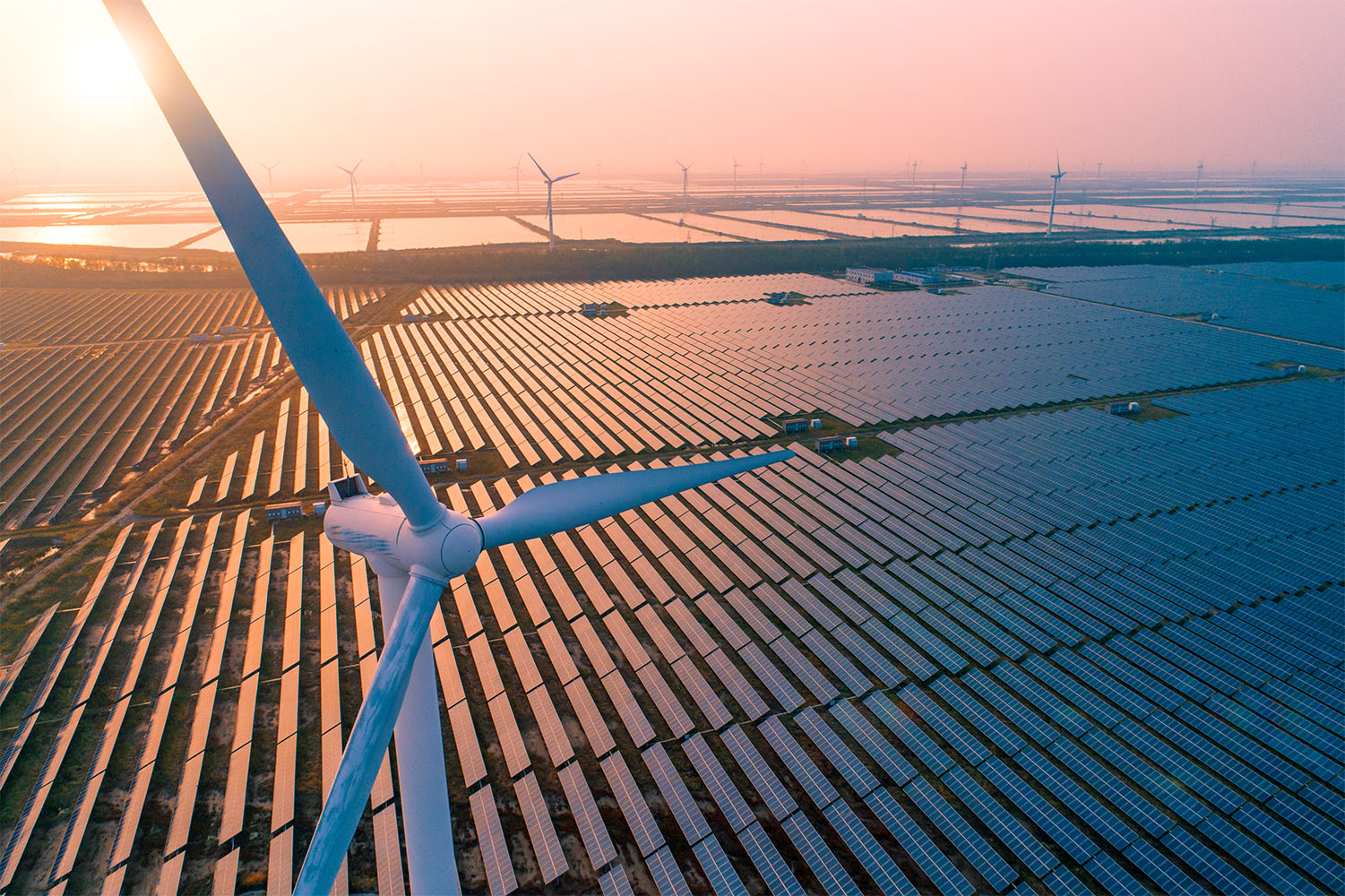The Energy Transition | UK launches Global Clean Power Alliance at G20 Summit
Published on 25th Nov 2024
Welcome to our top picks of the latest energy regulatory and market developments in the UK's transition to net zero.

This week we look at the UK's launch of a global clean power alliance, the National Energy System Operator's new frequency balancing service, funding for an electricity "superhighway" between Scotland and England, and more.
UK launches Global Clean Power Alliance at G20 summit
Sir Keir Starmer, the prime minister, has officially announced the launch of the UK-led Global Clean Power Alliance at the G20 Summit in Rio de Janeiro. The alliance is intended to unite countries in a shared aim to accelerate the shift to clean energy, enhance energy security and create green jobs. Its primary goal is enhanced collaboration towards meeting the commitments set at COP28 to triple renewable energy and double energy efficiency worldwide.
To achieve these objectives, the alliance will work on a series of missions targeting the most important challenges in the transition. So far, the alliance has 12 member countries, including Brazil, Australia, Canada, France, Germany and Norway, and members of the African Union. The United States and the European Union have also signed up to partner with the initiative.
The first mission, co-chaired by the UK and Brazil, will focus on finance. It will aim to coordinate political and economic leadership between countries, to deliver the large scale finance required to invest in the green energy projects required for a successful transition. Particular emphasis has been placed on the need for greater investment in developing countries, echoing concerns raised at the recent COP29 summit.
The prime minister emphasised the UK’s commitment to leadership in the clean energy transition, calling the Alliance "a once-in-a-generation opportunity to make sure we face up to the climate crisis head-on, while delivering more jobs, growth and prosperity for people across the entire planet."
NESO launch new frequency balancing service Quick Reserve
The National Energy System Operator (NESO) has announced the first phase of its new frequency balancing service, Quick Reserve, which is scheduled to become operational on 3 December 2024. This service will replace NESO’s existing Fast Reserve service and is the first part of a range of reforms being introduced by it to improve efficiencies in the electricity network.
Quick Reserve will seek to address supply and demand imbalances on the electricity grid help to maintain the system frequency as close as possible to the required level of 50.0 Hz. To achieve this, NESO is introducing two categories of units: Negative Quick Reserve (NQR) assets, which respond when supply exceeds demand, and Positive Quick Reserve (PQR) assets, activated when demand surpasses supply. All units must be able to alter their generation or demand by a minimum of one megawatt (MW) and be able to meet NESO’s requirements within one minute.
This first phase proposal was submitted to Ofgem in August of this year and received approval on 30 October 2024. It is expected to deliver significant improvements in efficiency, which NESO estimates could result in consumer savings of £29-£32 million per year. These increased efficiencies stem from NESO securing sufficient reserve capacity ahead of time, so that it is available to meet demand and supply requirements as they arise. This will reduce the need for more expensive engagement with optional services such as the Optional Fast Reserve market and bilateral Spin Generation and Pump Storage contracts. Phase 2 will expand the services further and is currently going through consultation with industry and Ofgem.
A live auction platform opened on 19 November 2024 for providers wishing to "pre-qualify" their assets for participation in Quick Reserve. Procurement will be effected through single simultaneous day ahead auctions, the first of which will take place on 3 December, ahead of service delivery commencing.
Improved flexibility and balancing services within the energy system are essential as the UK continues its transition to net zero and depends more heavily on less consistent renewable sources. NESO has emphasised that Quick Reserve will be a key step in the ambition to operate a zero-carbon electricity network.
Government publishes outcome of call for evidence on non-pipeline transport for carbon capture projects
The government has published the outcome of a two month call for evidence on the non-pipeline transport (NPT) of carbon dioxide (CO2) and cross border networks. The call for evidence closed in July 2024. In total the government received 85 responses from a range of stakeholders, including trade associations and advisory groups, with the largest number of responses (25) being from prospective carbon capture projects which hope to deploy using NPT.
The importance of carbon capture, usage and storage (CCUS) in the UK's goal to reach net zero by 2050 has been highlighted by the Climate Change Committee, which stated in 2019 that CCUS is "a necessity, not an option". CCUS is particularly key in industries where the inherent emissions of production mean that it is the only viable route to decarbonise at the required scale.
As CCUS requires CO2 to be transported from where it is emitted to where it will be permanently stored, the government has recognised the need to expand the CO2 transport network for both pipeline and non-pipeline solutions. There is a particular focus on NPT as this will allow for CCUS to be used in areas where a pipeline is not technically or commercially feasible (such as South Wales, Southampton and the Scottish Highlands).
It was clear from responses that NPT is necessary for the expansion of CCUS in the UK, particularly as around 50% of industrial emissions come from outside industrial clusters, and even within industrial clusters there is not always access to a piped solution. Additionally, the importance of cross-border transport and storage networks was emphasised, as well as the need for the UK to leverage its vast subsurface storage capacity. For the necessary networks to succeed there is a need to develop consistent CO2 standards, reach political agreements and overcome significant regulatory barriers.
The key barriers to NPT were also identified by respondents as including high operational costs, uncertainty over long-term CO2 supply, and the planning and consenting process impacting delivery timelines. Respondents highlighted the capital savings that could be achieved in regions with existing port infrastructure, which could be utilised to transport captured emissions to offshore storage locations.
The government states there is a high level of interest in NPT from a range of stakeholders and that significant progress is being made by industry in developing a variety of technical solutions across ship, road, rail and barge transport modes. The government reiterated that the vision for NPT set out in the original NPT document, including that all CCUS clusters will ultimately have access to it, is consistent with the aim of delivering a decarbonised power system by 2030 and the NPT strategy will continue to be developed. It now aims to publish further consultation on this sector in the second half of 2025 intending to cover support for NPT costs, risk allocation and economic licensing.
Ofgem approves funding for £2 billion England-Scotland 'electricity superhighway'
Ofgem has announced funding of £2 billion for the construction of Eastern Green Link 1 (EGL1), a new 196km subsea electricity superhighway that will connect East Lothian in Scotland to County Durham in Northern England.
Once operational, the project will be able to directly transport up to two gigawatts (GW) of energy generated by Scotland's extensive renewable assets at rapid speed to Northern England, which can then feed demand all across the UK grid.
One of the project's main benefits is the ability to effectively transmit energy generated from remote wind farms in Scotland to the areas of the network where it is most in demand. In particular EGL1 will allow the bypass of the B6 Boundary, which is currently the only interface between the English and Scottish transmission networks. The boundary is a notorious cause of constraint costs, and currently heavily impacts the volume and speed of transmission between the networks. This has meant that the amount of clean energy that can be transported to England and Wales, when there is a high abundance of renewable generation from onshore wind farms in Scotland, has been limited to a level far below the potential.
It is anticipated therefore that EGL1's operation will lead to a reduction in the compensation paid to owners of Scottish wind projects required to cease generation during times of high wind due to limits on grid capacity.
The project is the second to proceed under Ofgem's new Accelerated Strategic Transmission Investment (ASTI) framework. The ASTI framework is designed to ensure that critical energy infrastructure projects can receive funding quickly and outside of the standard contracts for difference process. Ofgem estimates that projects proceeding under the ASTI framework could be delivered two years earlier due to the expedited funding process.
EGL1 is the first of four electricity superhighways planned between Scotland and England. Eastern Green Link 2, a connection between Peterhead in Northern Scotland and Drax in Yorkshire, has already been granted provisional approval, while the plans for EGL3 & EGL4 are still in development.
Government funding for AI innovation to help decarbonise the grid
The government has launched the second round of the Manchester Prize, inviting applicants to submit artificial intelligence (AI) solutions and innovations to help decarbonise the grid.
The Manchester Prize was introduced in 2023 and is funded by the Department of Science, Innovation and Technology in collaboration with Challenge Works (part of UK innovation foundation Nesta). The prize will be awarded each year for a decade in order to provide funding for UK-led AI developments for the public good. This is the second round of the prize and the focus is on "AI for Clean Energy Systems", with solutions required to deliver on one of the following aims:
- accelerating the UK's adoption of clean energy technologies at scale;
- enabling efficient or low-cost operations of clean energy systems; or
- significantly reducing energy demand or optimising energy storage.
The government has also stated that the winning innovation should be able to demonstrate a plan for near-term adoption and scale. Applicants will also be assessed on the criteria of innovation, long-term viability, feasibility, safety ethics and sustainability.
As part of this round, the government will award up to 10 finalists with £100,000 each, as well as £60,000 in compute credit to develop their innovations, and a package of non-financial support. One of these finalists will be awarded the grand prize of £1 million in early 2026. Applicants have until 17 January 2025 to submit their solutions, with the finalists being confirmed in the spring.
Minister for AI, Feryal Clark, has said: "The second round of the Manchester Prize will bring brilliant British innovation to bear to deliver a clean, secure energy future for the UK."
This article was written with the assistance of Joe Sandom, James Harnett and Alexander Eaton, trainee solicitors.

















